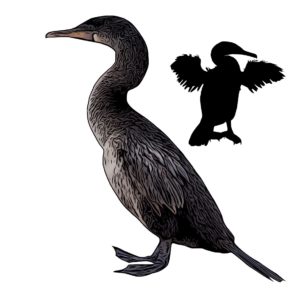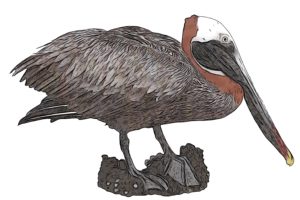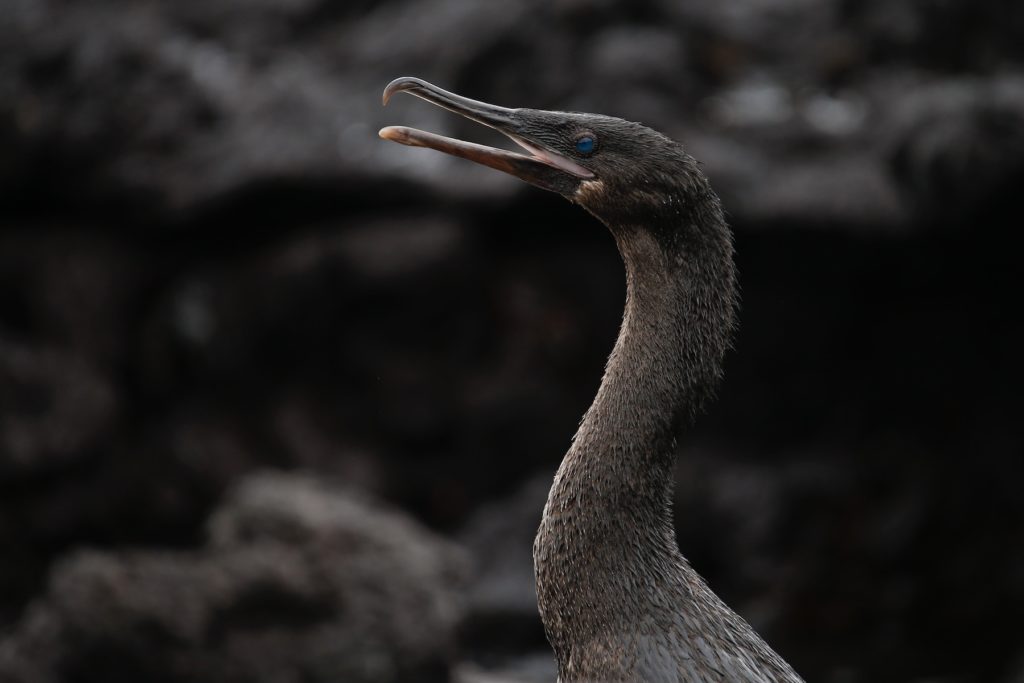
Flightless Cormorant
Where to Look
- Punta Espinosa, Fernandina
- Punta Vincenta Roca, Isabella
- Urbina Bay, Isabella
- Tagus Cove, Isabella
Related Galapagos Species

Brown Pelican

Identification
Unmistakable. The only cormorant in the Galapagos.
Description
Adults are overall dull brown-black with slightly darker upperparts and paler underparts. Their bills are dull brown to horn colored with a small white border around their gular pouch. Mature birds have beautiful blue eyes. Wings are markedly reduced compared to typical cormorants and appear shaggy. Males are slightly larger than females. Juveniles are similar to adults, but are more uniform brown-black, have dark eyes and brownish bills.
Galapagos Distribution
Endemic to the cold waters of west Galapagos, where it can be found along the rocky coastlines of Fernandina and Isabella. Absent from Isabella’s south coast.
Global Distribution
Endemic to the Galapagos.
Status in the Galapagos
Common resident found along rocky shorelines.
Conservation
Vulnerable. Due to this species flighlessness and tiny range, it is particularly vulnerable to a variety of threats. The introduction of cats, dogs and rats onto Fernandina by accident, would leave breeding individuals extremely vulnerable to both direct and nest predation. Arguably more threatening, however, are El Nino effects which increase surface water temperatures and so lower the productivity of the cormorants’ feeding grounds. As the birds are flighless, the can not travel as far as other species in search of food during warmer years (this may be one of the reasons they are restricted to the inherently colder and richer waters around Isabela and Fernandina. Although a 2013 census estimated that the total population was roughly 2000 it has fallen as low as 400 (in 1983). Regular population bottlenecks like these may thus have impacted the population’s genetic diversity leaving it particularly vulnerable to disease. Even the eruption of Fernandina’s volcano poses a significant threat as cormorants rarely dispearse between Fernandina and Isabella.
